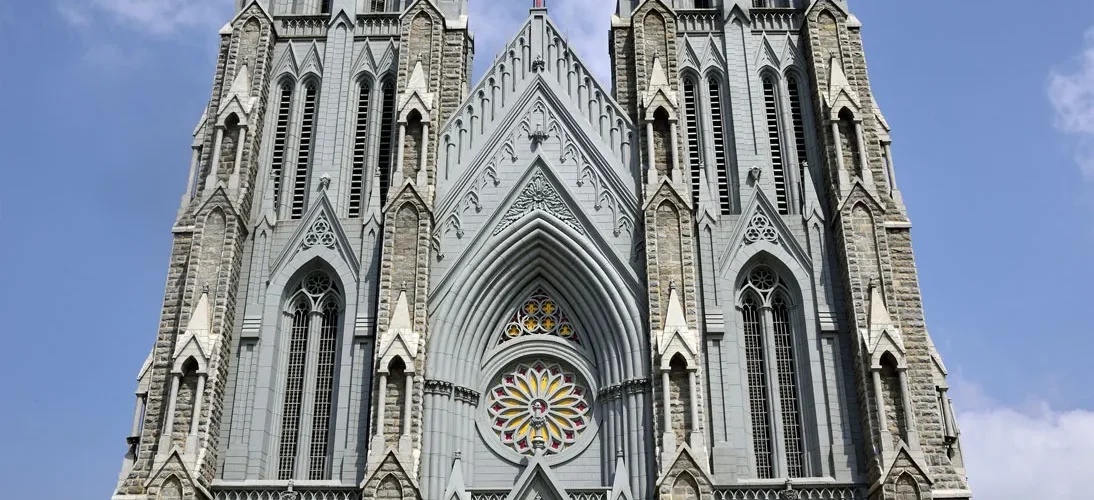Introduction
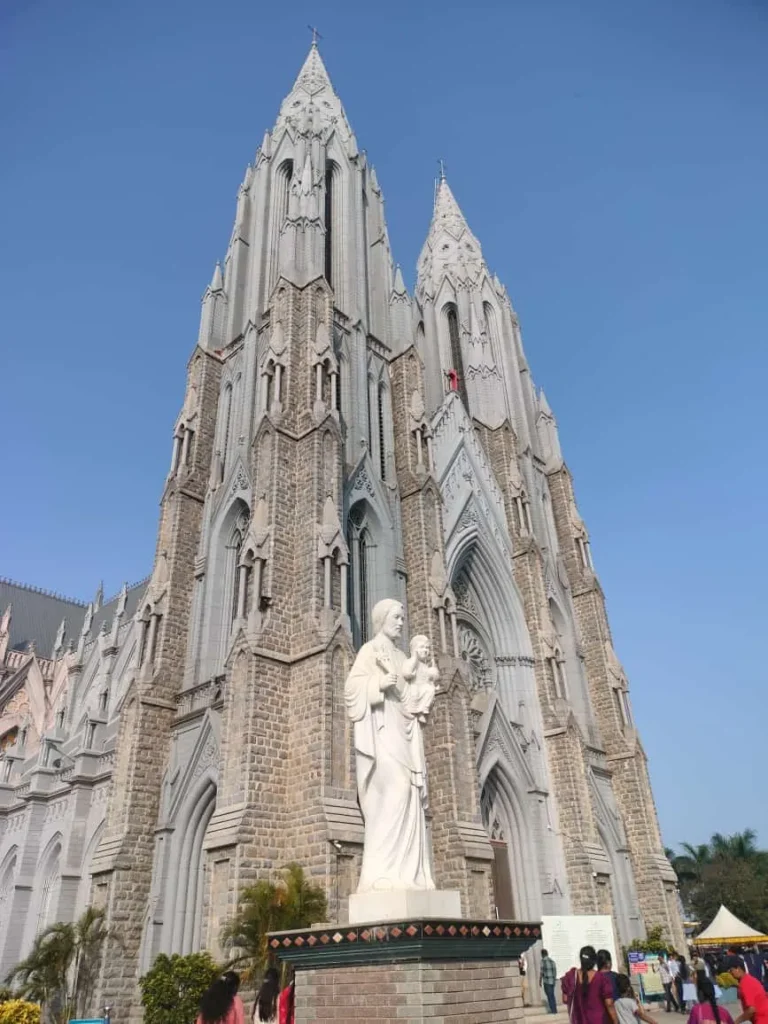
St. Philomena’s Cathedral is a Catholic church that is the cathedral of the Diocese of Mysore, India. The full name is the Cathedral of St. Joseph and St. Philomena. It is also known as St. Joseph’s Cathedral. It was constructed in 1936 using a Neo Gothic style and its architecture was inspired by the Cologne Cathedral in Germany. One of the largest cathedrals in India, St. Philomena’s Cathedral in Mysuru is a remarkable example of Gothic architecture. The majestic church, built to honour the memory of Saint Philomena, a Latin Catholic Saint of the Roman Catholic Church, draws inspiration from the beautiful Cologne Cathedral of Germany. Remains of St Philomena are preserved at the cathedral. St. Philomena’s Cathedral is one of the tallest churches in Asia.
History of St. Philomena's Cathedral
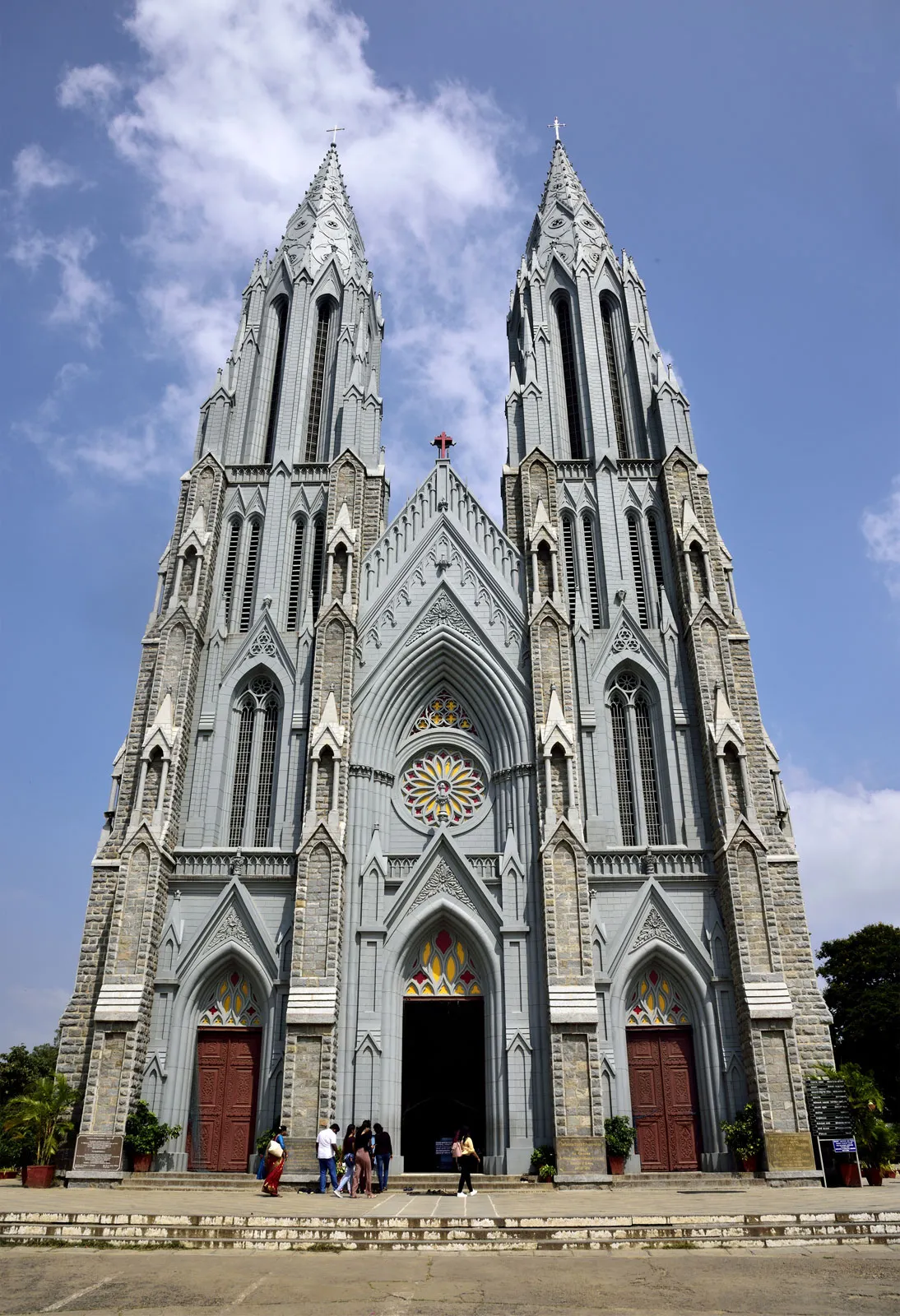
The church is dedicated to 3rd century saint Philomena who was the daughter of the monarch of a small state in Greece. Her parents were childless for several years. They prayed Jesus to bless them with a child and the next year Philomena was born to them. Even in her childhood Philomena showed signs of piety. When Philomena was 13 years old her father took her to Rome to obtain the favour of Emperor Diocletian. The Emperor was enthralled by her beauty and wanted to marry her. But she refused and vowed to give herself to God. She was tortured and beheaded in Rome. But people’s devotion for her spread near and far and she was given sainthood.
St. Philomena is a Latin Catholic saint and martyr of the Roman Catholic Church. She was a young Greek princess martyred in the 4th century. The remains of a teenage girl no older than 14 were discovered on 24 May 1802 in the Catacombs of Saint Priscilla at the Via Salaria in Rome. Accompanying these remains were a set of tiles bearing a fragmented inscription containing the words LUMENA PAXTE CUM FI, words of no known meaning in that order. The letters were rearranged to read PAX TECUM FILUMENA, which in Latin translates to Peace with you, Filumena. also some symbols of her martyrdom and a vessel, containing dry blood, was also found in the tomb. From these discoveries, it was concluded that a Christian named Filumena (Philomena) was buried in the tomb and the vessel containing blood was thought to be her relic, an evidence of a martyr’s death.
The floor plan of the cathedral is in the form of a cross. The cathedral has a crypt that houses a statue of St. Philomena. This statue was specially brought from France. Beneath the altar lies the underground catacomb that contains the relic of St. Philomena. The twin spires of the church are 175 feet in height and they resemble the spires of the Cologne Cathedral and also the spires of the St. Patrick’s Church in New York. The main hall can seat up to 800 people and contains stained glass windows depicting scenes from the birth of Christ, the Last Supper, the Crucifixion, the Resurrection and the Ascension of Christ. It is considered to be Asia’s second largest church.
Architecture of St. Philomena's Cathedral
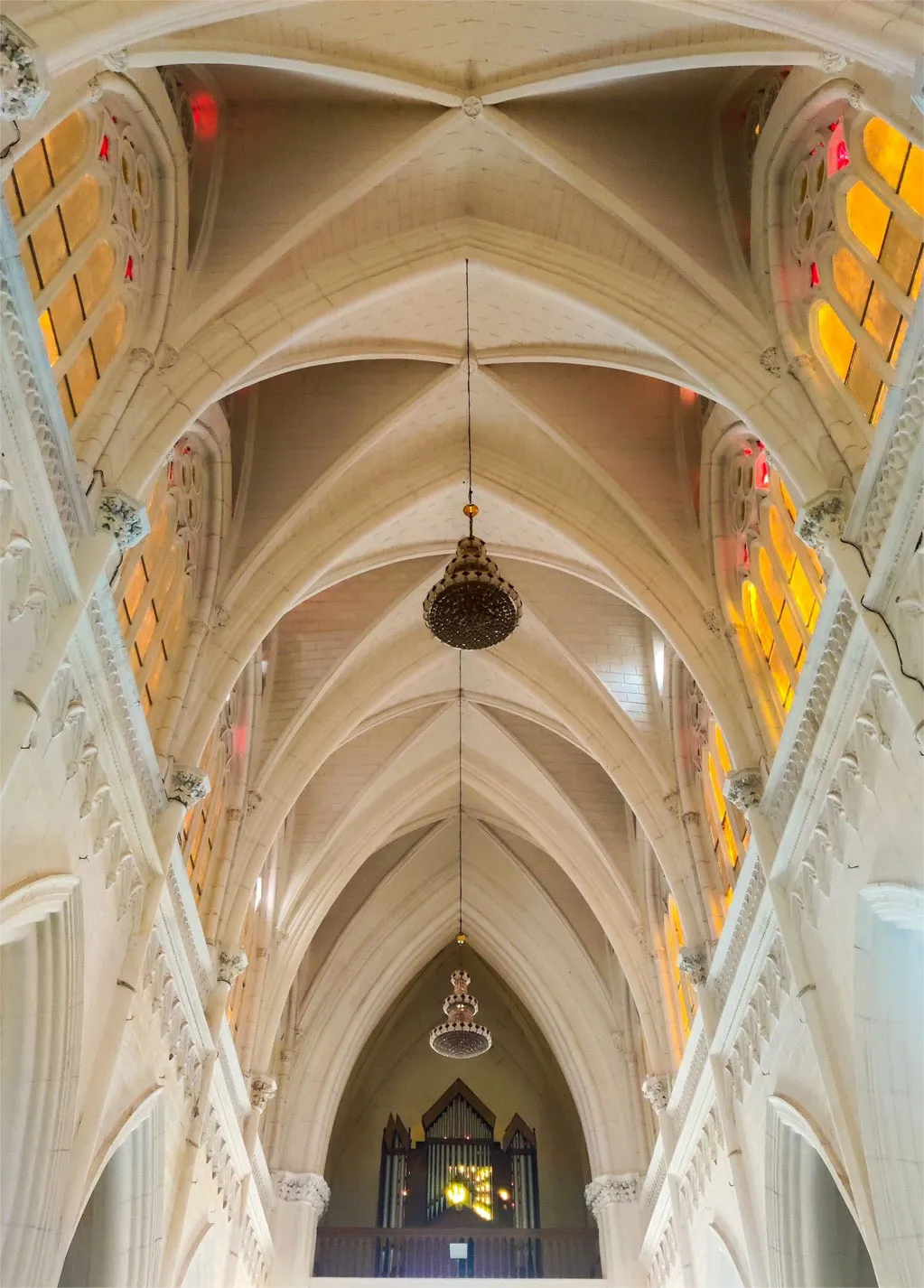
A church at the same location was built in 1843 by Maharaja Krishnaraja Wodeyar III. An inscription which was there at the time of laying the foundation of the present church in 1933 states: “In the name of that only God – the universal Lord who creates, protects, and reigns over the universe of Light, the mundane world and the assemblage of all created lives – this church is built 1843 years after the incarnation of Jesus Christ, the Enlightenment of the World, as man”. In 1926, Sir T. Thumboo Chetty who was the Huzur Secretary to the Maharaja of Mysore, Nalvadi Krishnaraja Wodeyar obtained a relic of the Saint from Peter Pisani, Apostolic Delegate of the East Indies. This relic was handed over to Father Cochet who approached the king to assist him in constructing a church in honour of St. Philomena.
The Maharaja of Mysore laid the foundation stone of the church on 28 October 1933. In his speech on the day of the inauguration, he said: “The new church will be strongly and securely built upon a double foundation — Divine compassion and the eager gratitude of men.” The construction of the church was completed under Bishop Rene Feuga’s supervision. The relic of Saint Philomena is preserved in a catacomb below the main altar. This church is a good example of blending of local culture. Some of the female statues are dressed with local traditional dress, Saree.
The church was designed by a Frenchman named Daly. It was designed to be built in the Neo Gothic style with inspiration drawn from the Cologne Cathedral. The floor plan of the cathedral resembles a cross. The long part of the cross is congregation hall called the nave. The two arms of the cross are the transepts. The part containing the altar and the choir is the crossing. The cathedral has a crypt that houses a statue of St. Philomena. The twin spires of the church are 175 feet (53 m) in height and they resemble the spires of the Cologne Cathedral and also the spires of the St. Patrick’s Church in New York City. The main hall (nave) can seat up to 800 people and contains stained glass windows depicting scenes from the birth of Christ, the Last Supper, the Crucifixion, the Resurrection and the Ascension of Christ. It is considered to be Asia’s second largest church.
Altar
There is a beautiful catacomb of St. Philomena below the main altar.
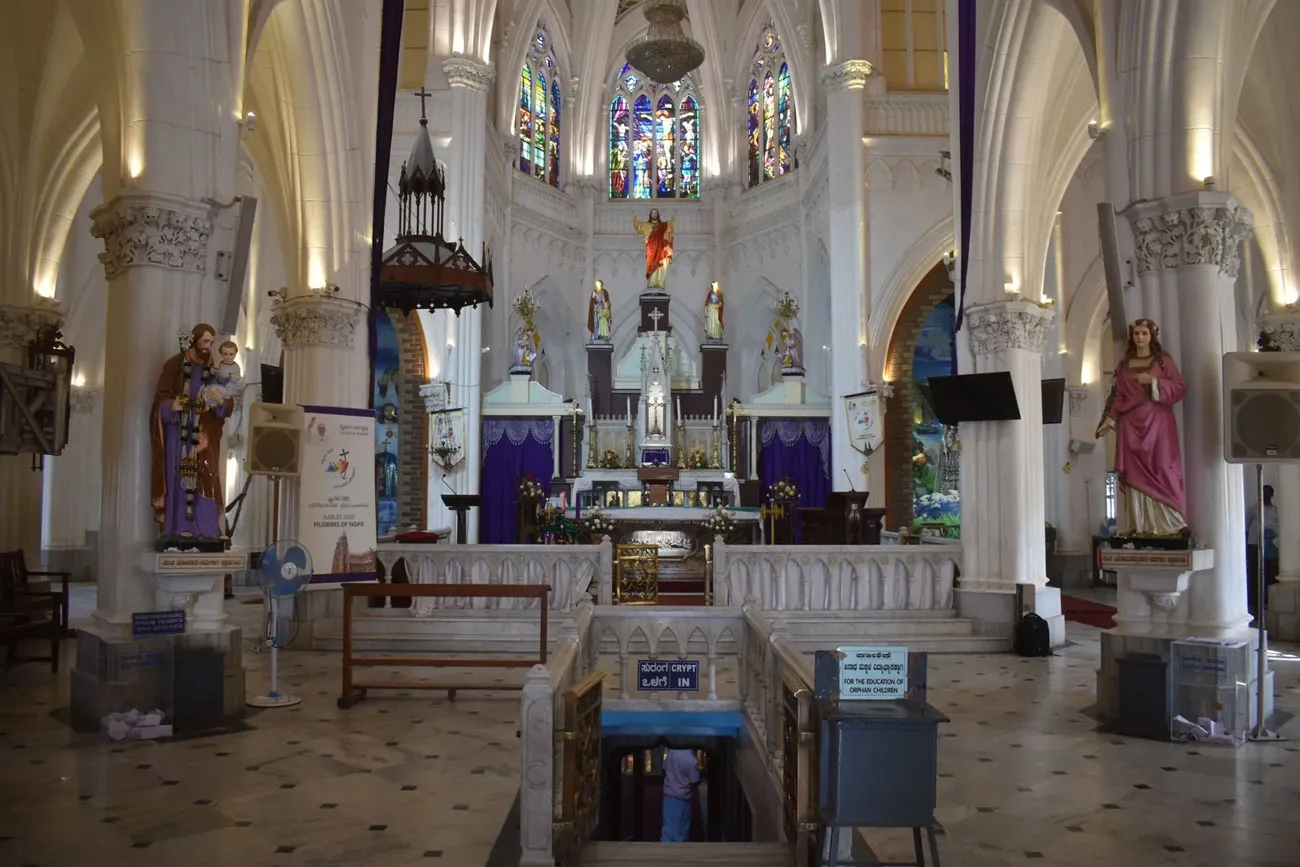
Feast Day
Feast Day: August 11
Annual feast on the 11th of August
Mass Timing
Week Days Mass Timings
Tamil 5:30 am
Kannada 6:15 am
English 7:00 am
Kannada 6:00 pm
Sunday Mass Timings
Tamil 5:00 am
Kannada 6:00 am
English 7:00 am
Tamil 8:00 am
Kannada 9:00 am
Kannada 6:00 pm
Contact Info
Lourdes Nagar, Ashoka Rd,
Lashkar Mohalla, Mysuru,
Karnataka 570001,
India.
Phone No.
Tel : +91 85925 46589
Accommodations
Connectivities
Airway
24 min (12.0 km) via NH-150A Mysuru Airport to St. Philomena church
Railway
7 min (1.9 km) via Ashoka Rd and Irwin Rd to St. Philomena church

